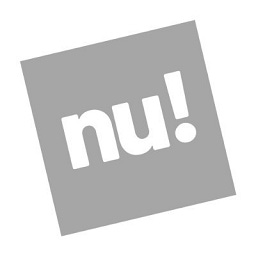It’s corporate tech conference season again.
Apple just finished WWDC, Google I/O was a few weeks ago as was Facebook F8, and we recently finished IBM Think and Dell Technology World. Cisco Live is taking place as we speak.

Although there have been some changes in 2021 due to the whole pandemic thing—conferences are online-only or mostly-online, swag and promo items are being shipped instead of presented IRL—the broad strokes remain the same.
Corporate tech conferences all share a few things in common:
Serving a core audience who almost always take secondary public billing—the sponsoring corporation’s leadership, employees and contractors.
Serving secondary audiences who almost always take primary public billing—the sponsoring corporation’s vendors and developers/entrepreneurs who operate in their ecosystem.
Serving a tertiary audience—the sponsoring corporation’s customers and the public at large. This group is largely spearheaded by their power users, who may not exercise significant financial leverage over the corporation but have significant leverage over brand perception and corporate reputation.
Take Facebook’s F8 2021, for instance. Officially billed as “F8 Refresh,” the conference returned after a 2020 shelter-in-place lull. As FB VP of platform partnerships Konstantinos Papamiltiadis puts it:
Over the years, we added new industry tracks and introduced iconic Facebook consumer products. But as the event evolved, we heard from an increasing number of developers who wanted us to share the technical content that would help them build, innovate and grow on our platforms. […] The announcements covered today are focused on Facebook technologies designed to unlock new opportunities for developers and businesses around the world to build and grow on our platforms.
That’s a pretty succinct statement of purpose IMO. This year, their conference included some pretty important announcements:
Opening up Instagram’s messaging API to developers. (Boring but going to generate a ton of money!)
Updating the WhatsApp API for businesses so it’s easier to use. (Super-important for the non-US market!)
Making it easier for third-party developers to create tools for Facebook Business Suite. (See again: making a ton of money!)
Unveiling a new MultipeerAPI for augmented reality. (Not a huge moneymaker, IMO, but setting stage for more moneymaking in the future.)
Making PyTorch the default framework for their AI and machine learning models going forward. (Not a moneymaker, but super-important for Facebook’s long-term strategies.)
In and of themselves, none of these announcements need a flashy event. Facebook, Inc. could easily issue seperate press releases for each one, drip them out over the quarters, and tailor their messaging to the different audiences each announcement impacts.
But for tech companies, hosting big conferences serves as a calling card. These conferences aren’t necessarily about making announcements.
They’re also about declaring identity and building a sense of belonging.

Brand identity, especially in the tech industry, is a tricky thing.
You have a handful of companies where customers identify emphatically with their chosen brands (Apple, Tesla), a handful of companies whose products are so ubiquitous that their brands are inescapable (Microsoft, Google, Amazon, Facebook), and a wide in-between of companies whose products are know and used, but aren’t either omnipresent or identity signifiers.
But, but, but…. once tech companies reach a certain size, they begin building communities around themselves whether they like it or not.
And I’m not saying “building communities” in a sleazy marketer sense. I’m saying “building communities” in a genuine your customers find commonalities in using your product and reach out to each other sense.
I’ll give an example from startup land:
My imaginary company, Full.fillment, creates software that makes it easier for entrepreneurs selling on Etsy, Ebay and Amazon to manage inventory and ship items out. We’re a small company with around ten employees, one of whom handles our marketing and PR. Our marketing efforts are modest—a email campaign here and there, targeted ads on social here and there, the occasional newsletter about product updates.
But Ful.fillment is seeing something weird. One of our users posted on Twitter about a software bug. We messed up and didn’t check our socials daily, but another user in their industry saw the post before we had a chance to respond. They posted “Yeah, that sucks, but Ful.fillment has been really helpful! More useful than the competition and they respond really quickly when you email them!”
Six weeks later, one of our users posts a homegrown tutorial to YouTube showing how to use our software to manage inventory.
Poof. A small but modest customer base is born.
Scale that by the tens or hundreds of millions or billions of users that larger tech companies have, add some paid community development into the mix and you have a pretty good idea of how these communities happen.
In an ideal world, we wouldn’t build our identities and communities around the companies whose products we use! But I work in advertising so I’d be up the creek without a pddle in that world, so scratch that.
However, we live in a world where customers build identities and communities around the products they use. They also do so enthusiastically.
Even if this year’s tech conferences are taking part online instead of at splashy in-person events, they still fulfill a crucial role: Building community.
Ignore that at your own risk.




